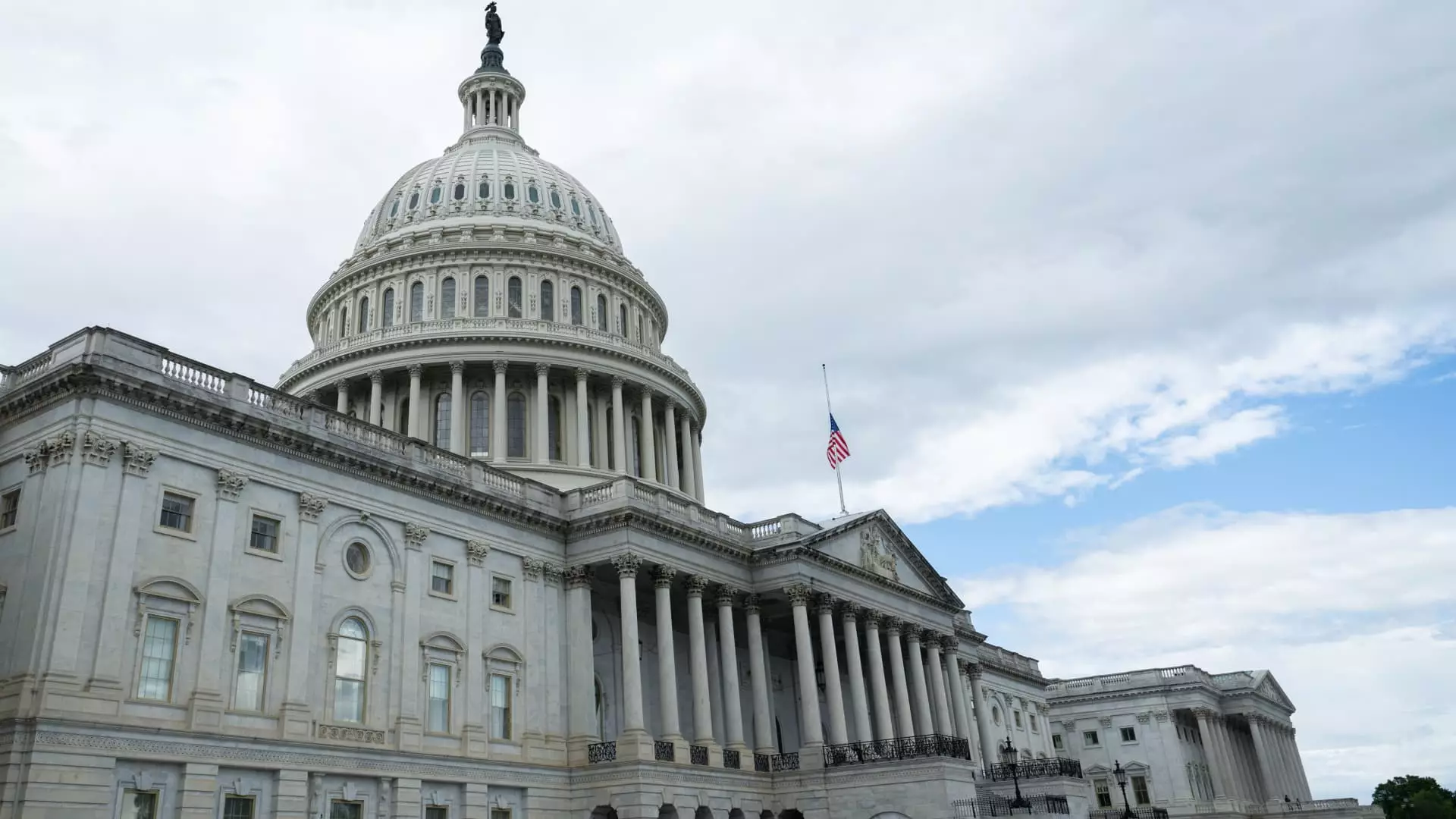In recent months, the legislative actions of House Republicans have ignited a firestorm of debate across economic and political landscapes. A sweeping tax cut package, passed in May, is poised to increase the national debt by an astonishing $3.1 trillion over the next decade, according to the Committee for a Responsible Federal Budget. Some forecasts are even grimmer, predicting an increase of $3.8 trillion when all economic factors are considered. As policymakers in the Senate begin their deliberations, this issue hangs like a dark cloud over the prospective legislation, garnering skepticism even from within Republican ranks.
Representatives and senators are beginning to express unease regarding the bill’s potential long-term financial burden. The voices of dissent are not insignificant; Rep. Thomas Massie of Kentucky has notably called this legislation a “debt bomb,” warning of the devastating consequences it could unleash on future budgets. More troubling still is the fact that interest payments on the existing U.S. debt have already eclipsed national defense spending, marking a perilous trend for American fiscal stability.
Understanding the Macro and Micro Impact
It’s easy for individuals to disconnect from the weighty implications of national debt. After all, most Americans don’t think twice about policies looming over Capitol Hill. However, the reality is that the decisions made by lawmakers can exert profound effects on household finances. According to economists like Tim Quinlan from Wells Fargo, the perception of rising national debt often leads to higher interest rates on mortgages, auto loans, and other consumer debt. The connection may be abstract, but it is indeed real: as government borrowing increases, so too does the cost of borrowing for everyday Americans.
Mark Zandi, chief economist at Moody’s, succinctly illustrates how this relationship impacts individuals. He indicates that every $1 trillion increase in national debt can reasonably lead to higher borrowing costs for consumers. Therefore, the proposed tax cuts—expected to benefit high earners significantly—could, paradoxically, hurt the very middle and lower class Americans that these programs are designed to support. By tipping the scales in favor of the wealthy while disproportionately affecting the poor, this legislation threatens the foundation of economic equity in the nation.
Tariffs: A Dubious “Solution”
Compounding the issue is the argument put forth by some lawmakers and White House officials that President Trump’s tariff policies could counterbalance budgetary losses from tax cuts. However, this line of reasoning borders on wishful thinking, as many economists agree that tariffs are an unreliable source of revenue. A future administration could easily dismantle these policies, resulting in even greater fiscal uncertainty. The unpredictable nature of such measures raises red flags and calls into question the integrity of the financial planning underpinning these legislative efforts.
The irony is palpable: while the bill is heralded as a “One Big Beautiful Bill Act,” it carries potential repercussions that could send ripples throughout American society. The dividends are skewed toward the affluent, while middle-class families are left to shoulder the burden of rising interest rates and diminished public services.
A Looming Credit Crisis?
The ramifications of continuing down this path could be dire. As Moody’s downgraded the U.S. credit rating in May, concerns about rising federal deficits grew even more pressing. Investors, apprehensive about the growing financial burden, may begin to demand higher interest rates on U.S. Treasury bonds to offset perceived risks. This reaction could set off a cascading effect, with consumers facing not just higher mortgage rates but also increased costs for basic goods and services, as businesses pass on the expense of borrowing.
According to economic models, the debt-to-GDP ratio could soar to levels not seen in generations—possible figures reaching as high as 148% in the coming years. Such metrics serve as crucial indicators of a nation’s financial health, and ignoring them would be folly. As bond yields climb, taxpayers will find themselves at the mercy of increasing debt service costs that crowd out essential services, putting an immense strain on fiscal policy.
The Fragility of Consumer Confidence
The relationship between national debt and consumer confidence cannot be underestimated. Increased debt can lead to uncertainty, impacting everything from spending habits to investment strategies. Many consumers might not actively think about these issues, but the reality is that financial markets have become increasingly agitated by escalating debt levels. This anxiety manifests not only in higher interest rates but also in volatility across asset classes.
Past policies have shown that sustained high levels of national debt create a cynical cycle, wherein each new generation finds itself shouldering an insurmountable fiscal burden passed down from its predecessors. As we wrestle with these challenges, it’s critical to consider whether today’s economic policies are framing a future of prosperity or a precipice of collapse. The long-term ramifications of tax cuts structured around debt accumulation could become a complex puzzle that generations struggle to piece together.

